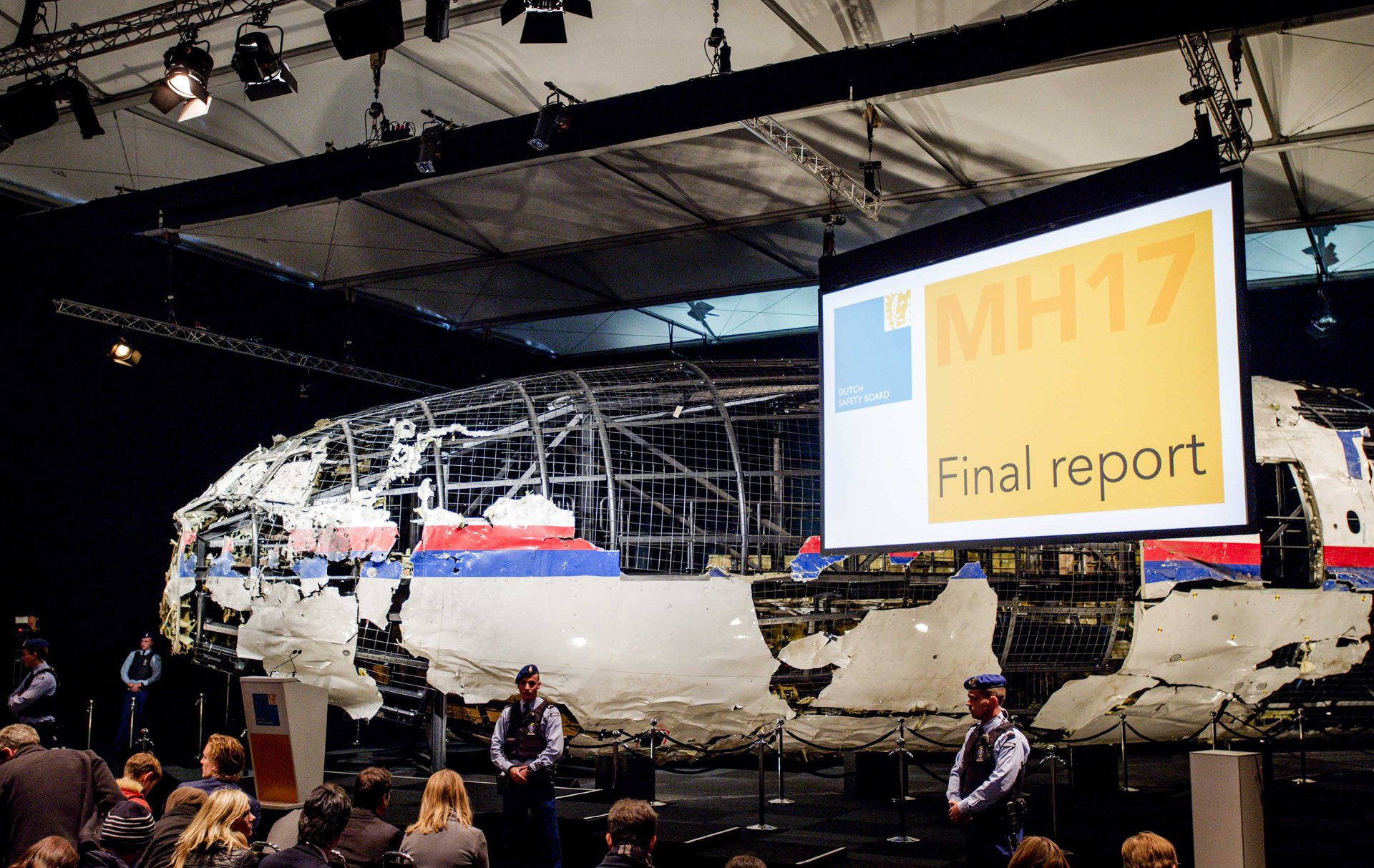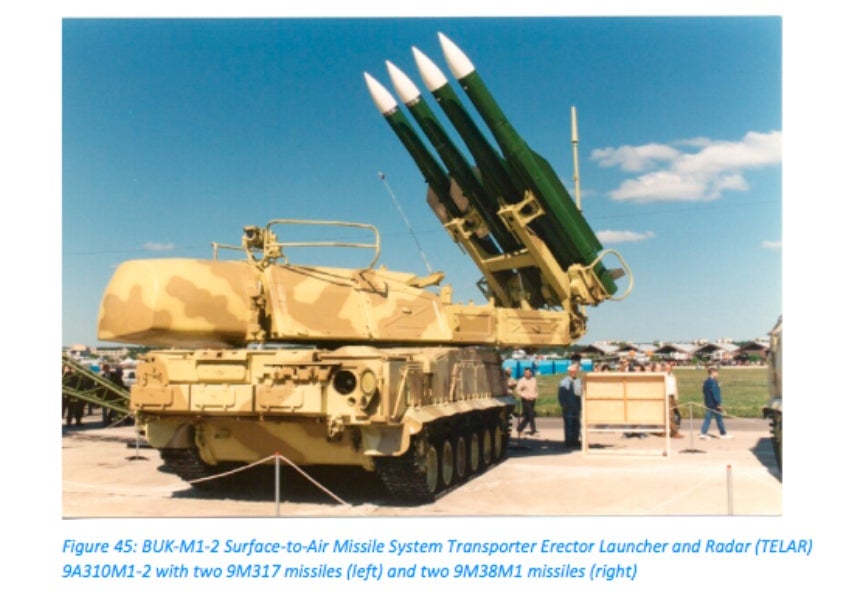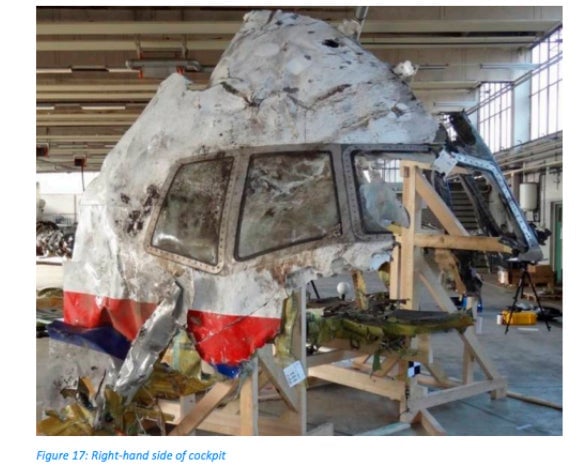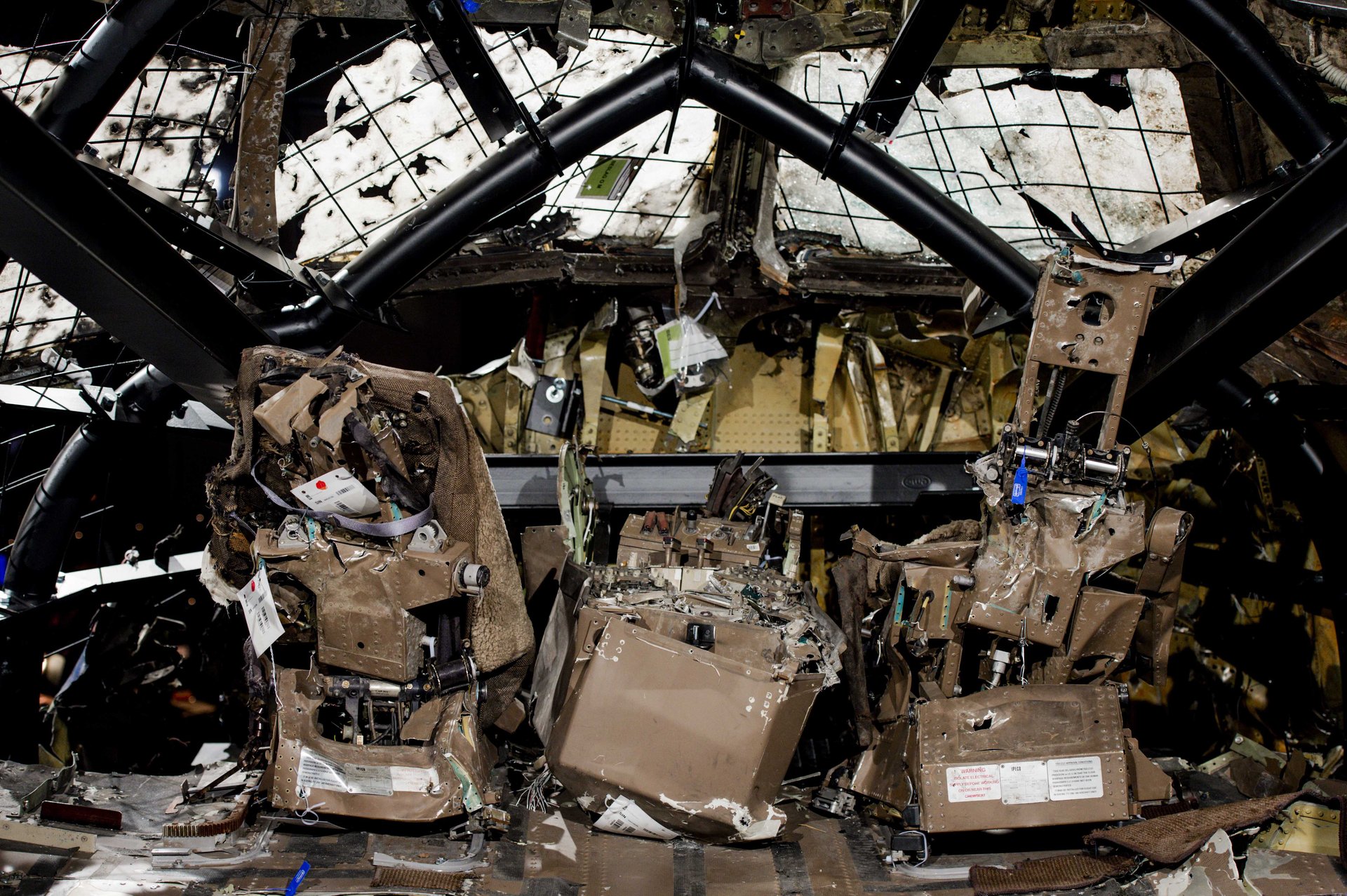Pictures: Investigators piece together the wreckage of MH17, and blame a Russian-made missile
The Dutch National Aerospace Laboratory (NLR) has published conclusions from its investigation of the crash of MH17, the Malaysia Airlines flight that went down in eastern Ukraine in July 2014 on its way from Amsterdam to Kuala Lumpur. The report (PDF) confirms what was suspected already: that a Russian-made Buk surface-to-air missile hit the plane and caused it to explode in midair.


The Dutch National Aerospace Laboratory (NLR) has published conclusions from its investigation of the crash of MH17, the Malaysia Airlines flight that went down in eastern Ukraine in July 2014 on its way from Amsterdam to Kuala Lumpur. The report (PDF) confirms what was suspected already: that a Russian-made Buk surface-to-air missile hit the plane and caused it to explode in midair.

The missile impacted the left side of the Boeing 777’s cockpit, instantly killing the three crew members inside. Investigators say that bow-tie-shaped pieces of shrapnel, consistent with what would have come from a Buk missile, were found inside those crew members’ bodies.

According to a Dutch Safety Board brochure about the investigation (PDF), a digital simulation of the impact showed that after the warhead detonated on the upper left side of the cockpit, the pressure wave that followed the explosion destroyed the front section of the aircraft, at which point the plane broke in half as “the cockpit and the floor of the business class tore away from the fuselage almost instantly and crashed.” Over the next 60 to 90 seconds, the rest of the plane continued flying for about 8 kilometers, breaking apart as air currents tore off the wingtips and tail.

Investigators briefed the relatives of the 298 people who died in the crash, many of them Dutch citizens, ahead of releasing their report. The relatives were told that their loved ones were likely knocked unconscious or killed on impact.
Here’s a video about the investigation:
As The Guardian notes, the NLR report does not include any findings of liability or blame; the Dutch criminal prosecutor’s office is currently preparing a report, due in 2016, for that purpose. It is widely believed that the missile was fired by Russian-backed separatists in Ukraine, but Russia has repeatedly denied any involvement.
The Dutch Safety Board (DSB), which commissioned the NLR report, discussed the findings at a press conference in The Hague today. DSB chairman Tjibbe Joustra said that the airspace where MH17 was brought down should have been closed, but officials had failed to recognize the risks posed by the armed conflict on the ground there. “Nobody gave a thought to a possible threat to civil aviation,” Joustra said (video).
On stage behind Joustra, there was a 20-meter-long partial reconstruction of the aircraft. Guardian journalist Luke Harding said it was ”haunting”:

Hours earlier, in Moscow, Almaz-Antey, the maker of Buk missiles, held its own press conference about the crash. The defense contractor conducted its own simulation of the event, in what the Kyiv Post called a “sloppy, pre-emptive measure” against the Dutch report. Almaz-Antey sought to prove that the missile must have been fired from ground controlled by the Ukrainian army, not by pro-Russian separatists. Almaz-Antey also argued that the plane was hit by a Buk model that is no longer used by Russia but that the Ukrainian army may be using. The presentation, during which Almaz-Antey representatives referred to a grade-school geometry textbook to explain their theory, was not very convincing.